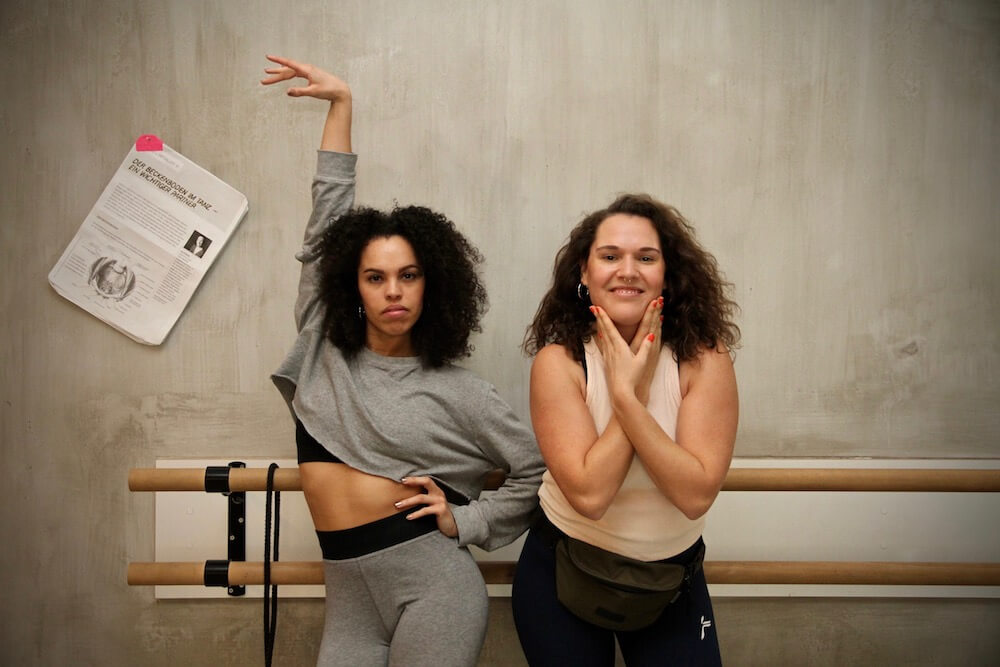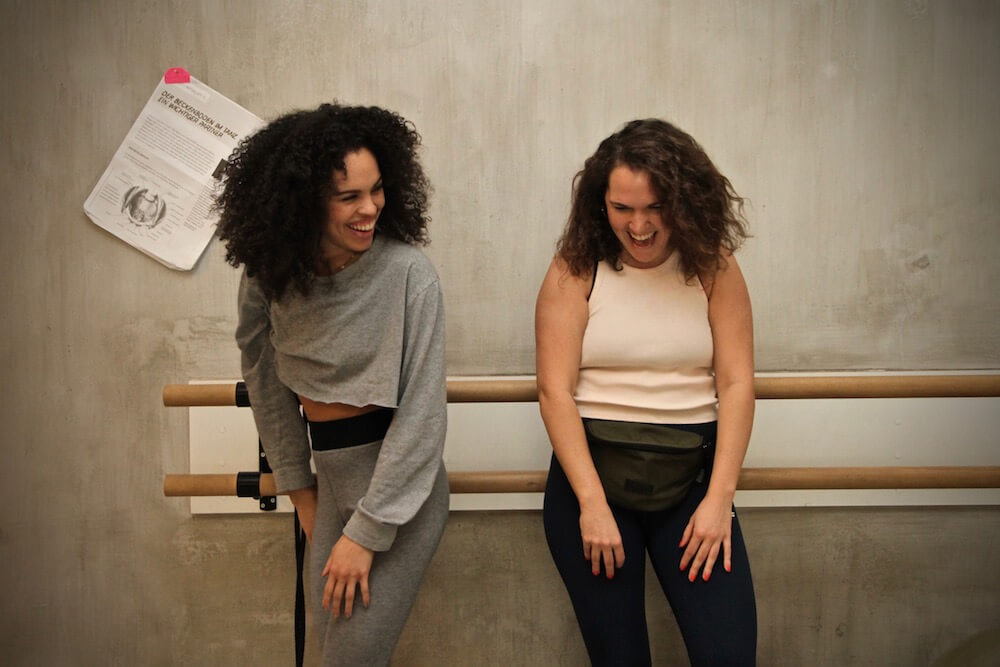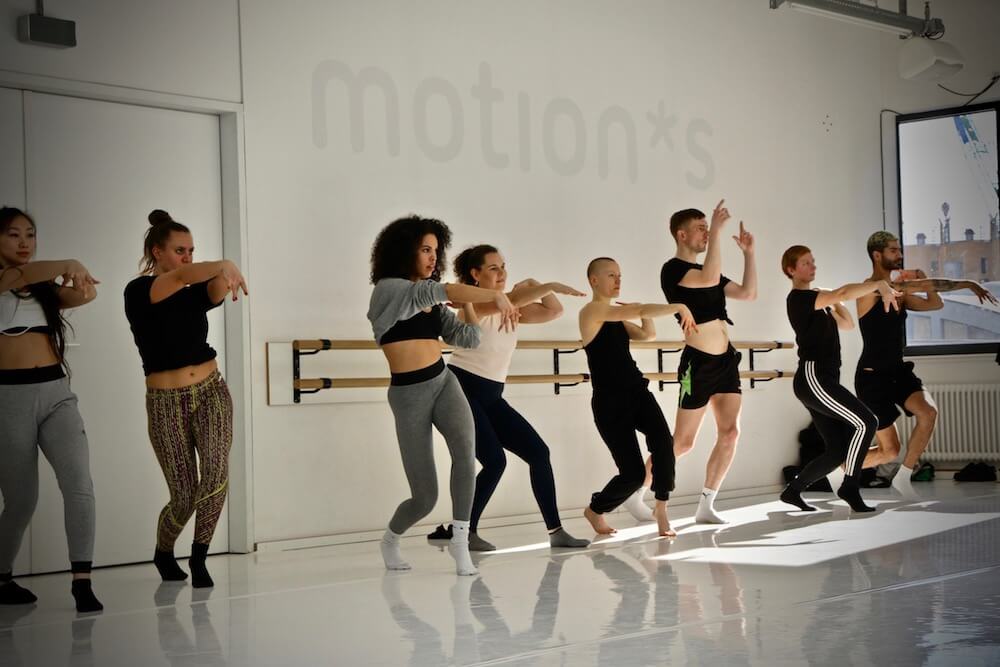
Welcome to Berlin’s ballroom scene: Vogueing
“Is this the first time y’all been Vogueing?” Sophie has a distinct East Coast accent. She stands with her back against a wall of mirrors, hip popped, wearing a cropped jersey, Nike leggings and socks to match. Her presence and energy fill the room, her eye contact fierce and unflinching. It’s clear that this woman is a dancer; but the confidence she exudes comes from somewhere beyond the dance floor.
This, friends, is ballroom culture.
It’s the first day of spring. Kreuzberg is alight with sunshine after a long winter and it streams through the windows of Motion*s Tanzstudio. I’m standing with fourteen other Vogueing students, all of us nervously awaiting further instructions from Sophie. “Today we’re going to focus on Hand Performance… But let’s start from the beginning.”
Sophie tells us all about the rich cultural history of Vogueing and how it originates from the black queer community of 1960s and 1970s Harlem. Many young kids of colour had been thrown out of their family homes, ostracised because of their sexuality. They congregated on the streets of New York where they were adopted by ‘Drag Mothers’ and joined ‘Houses,’ finding a new kind of family.

In this environment these kids were finally able to express themselves freely, subverting the gender norms that previously oppressed them. This expression manifested itself in the form of hyper-femininity. Within these Houses being gay was celebrated as a performance of identity. The Houses would hold ‘balls’ – usually on no budget and in community halls – where members of each House would compete in fearsome catwalk battles in categories such as ‘realness’, ‘butch’ and ‘runway.’
The poses struck in these battles would mirror those of the models they saw in the magazines they adored. Thus Vogueing was born.

Fast forward fifty years, hop across the Atlantic and here I am in the middle of Berlin about to learn the intricacies of this art form. Although documentaries such as Paris is Burning and the more recent Pose have catapulted Vogueing to the forefront of our cultural consciousness, many still misunderstand the dance.
“It’s about telling a story through your movements,” Sophie explains. She shows us a sequence of exaggerated taps on different body parts, designed to tell us her story, her journey. “I love myself, I love my hair, look at my nice butt, look how amazing I am.” She puts on a funky disco tune. “Oh my god I love this song!” she says, a ball of energy “Now follow me. 5, 6, 7, 8 and tap.” We follow her sequence, all of us intoxicated by her joy and enthusiasm “Yes, yes, yes, yes!”
She points at each of us, shouting encouragement, truly delighted by our performances. I can’t help but laugh. This is so much fun.

Sophie explains that the most difficult part of Vogueing isn’t actually striking a pose – it’s transitioning from one to the other in a creative way. “Don’t worry if some of your poses look bad,” she tells us. “It takes a long time to find out what looks cute. This is a safe space for us to figure that out.”
I find this encouraging. I, personally, am not one to pose. I don’t like being centre of attention and, when I walked into this class, I didn’t think I’d fit in or have the confidence to pull this off. But this is exactly what Sophie is teaching me – confidence. She says “Vogueing is unapologetic. It has to be. Many people think that because this is LGBTQ culture that everyone gets along and will sing and dance together. But it’s not like that; it’s a competition.

And it can be very harsh. But with that competition comes confidence. There is support, there is tough love but there is a lot of love. And you have to be unapologetic otherwise you won’t survive one second in that environment, on that floor. And that’s what spoke to me.” Sophie has danced ever since she can remember. Born and raised in Germany, her mother was a professional dancer from Philadelphia.
“My mother danced with amazing contemporary, ground-breaking people.” Sophie says. “As soon as I could walk she dragged me to ballet school. So dancing has been around me all my life. I’ve never not been dancing. It was never a conscious decision. It’s just what I’ve been doing, always.”
Sophie didn’t find ballroom culture – ballroom culture found her. Or rather, Georgina AKA Mother Leo Melody did. “She is the pioneer of German ballroom culture,” Sophie explains. “She started the first Vogueing house in Germany, House of Melody and threw the first functions and balls, panel discussions and workshops.” Sophie met Georgina when she was working as a professional urban dancer.
“Georgina asked me if I knew about Vogueing and if I’d done it before and I told her no. Part of my family comes from the East Coast of the US which is the birthplace of that culture, so I knew what it was, but I’d never been to a ball or anything.”
Sophie lost a bet with Georgina – which meant that she had to go to a ball in Amsterdam and participate. “What I saw there – the energy – I just immediately fell in love with it.”
She says. “It was so mesmerising and liberating to me. Something I’d never seen before. And out of all the categories Vogueing was the one that really spoke to me. I remember thinking whatever this is, I want to do it. I want to be part of this and I’m willing to earn my way and my place in this culture.”
When Sophie teaches Vogueing she doesn’t just teach dance moves. She speaks fluidly about its history, its foundations and its essence. “No one will leave my class not knowing that this is a queer, black, latino-born culture,” she says.
Towards the end of our Vogueing class we all stand against the wall, facing the mirror. Sophie crouches low and struts forward, showing us the ballroom catwalk, an overly exaggerated version of the typical runway walk you might see at a Dolce & Gabbana event. “Now split up – half of you will catwalk and and the rest will shout encouragement. You’ll see that you perform differently when you’re walking for people.”

As my classmates strut towards me I whoop and cheer them on. They strike pose after pose, using everything that Sophie has shared with us today to create their own interpretation of Vogueing, unique to each of them.
And then it’s my turn to strut the length of the studio. My classmates cheer me on as I take on a persona I didn’t even realise I had. And that’s when it becomes clear. Sophie isn’t teaching a dance. She’s teaching a mindset. She’s teaching us how to celebrate femininity in all its forms in a world where we are all too hard on ourselves.
That day I entered Motion*s Tanzstudio feeling self-conscious, nervous, full of doubt. But after class I step outside into that first day of spring feeling totally different. My head is held high, my self-consciousness has dissipated and I feel – perhaps for the first time – totally unapologetic.
If you’d like to try Vogueing head over to Motion*s Tanzstudio where Sophie and her colleagues rotate teaching every Friday from 12 – 1:30pm.
And Urban Sports Club has tons of dance partners across Germany, Italy, France and Portugal. Take a look at our site to see what’s on in your area.



Comments